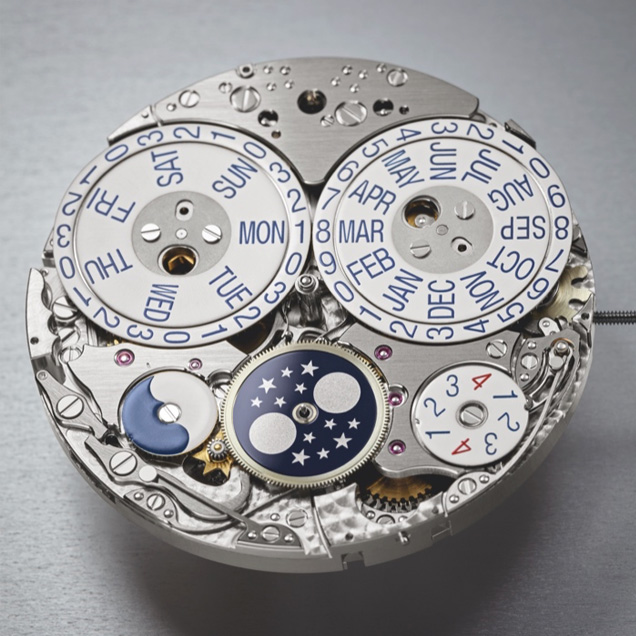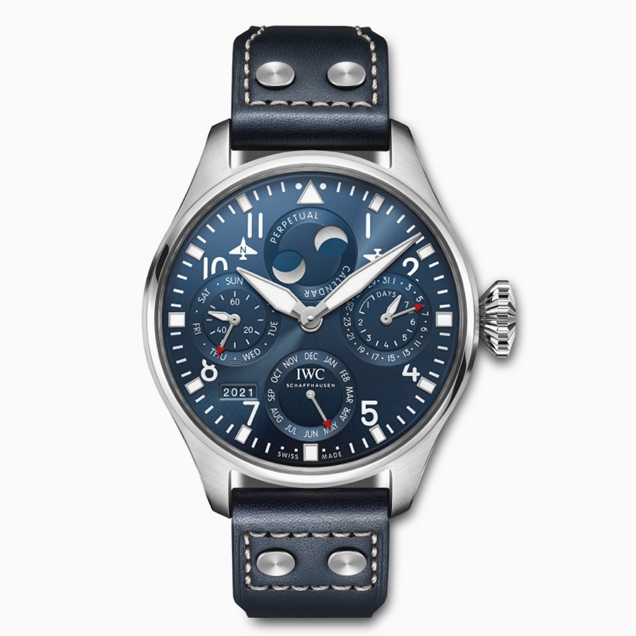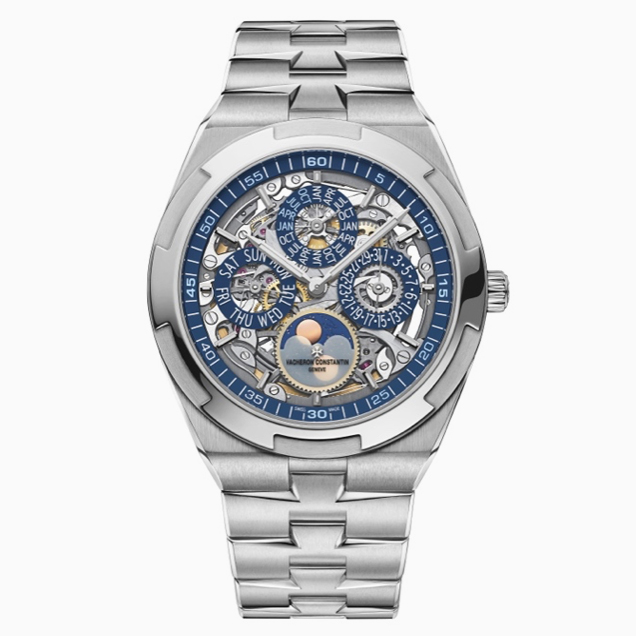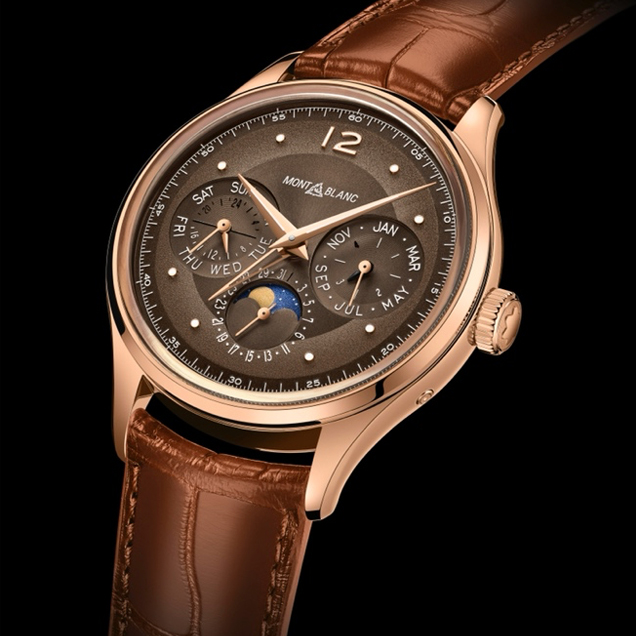Perpetual calendars have become increasingly popular as a complication over the last few years. Part of the reason for that is the ability to solve the complex problems that the Gregorian calendar presents with innovative mechanisms, specifically, the number of days a week, weeks per year and irregular days per month. To put it another way, months don’t have exactly four weeks or 28 days.
So, if January 31st is a Monday, then February 1st is a Tuesday; then February 28th would be a Monday with March 1st falling on a Tuesday. Mechanical watches have a problem with day and date jumps of this nature in a perpetual setting.
Patek Philippe ended Watches & Wonders with a grand finale courtesy of their new perpetual calendar ref. 5236P. In keeping with Patek calendar watches back to the ref. 1526 in 1941, through the ref. 3448 in the 1960s, this watch takes all the design codes of yesteryear and combines them into a new single linear display for day, date and month in one aperture. In terms of mechanical watchmaking, providing such a display is highly complex.
The complex patented movement of Patek Philippe’s new perpetual calendar ref. 5236P…

The movement, subject to three patents, operates four discs that are co-planar and ride on double ball bearings. Despite this complication, the result is an erudite and elegant perpetual calendar watch which has, like the ref. 3450 before it, an aperture for leap year and one for day/night.
Find out more here.
Patek Philippe were not alone in releasing new watches with this complication. IWC have placed their famous perpetual calendar movement in the Big Pilot’s Watch with a stainless-steel case and blue dial.
The Big Pilot’s Watch Perpetual Calendar carries the simple and remarkably precise single crown operating design created by Kurt Klaus in the 1980s…

Inside ticks IWC’s in-house calibre 52615 and displays all the perpetual calendar indicators in four subdials spread across the face of the watch. Should you wish, you can also have the same reference in the Mojave colouring as well.
Find out more here.
Following the same dial layout design acumen, Vacheron Constantin introduced the Overseas ultra-thin skeletonised perpetual calendar in white gold.
The Overseas collection, reinvented in 2016, conveys the spirit of travel…

The watch is an undoubted tour de force in terms of what can be achieved with a skeleton dial and the calendar complication. Both case and bracelet are in white gold, with the latter also being available in dark blue alligator or rubber; all subdials in blue.
Find out more here.
In a similar design style with the subdial display to the calendar, but with a completely different aesthetic, is the Montblanc Heritage Perpetual Calendar cased in rose gold with a deep “burned caramel” brown dial.
Inspired by the Minerva’s wristwatches of the 40s and 50s, the Heritage line combines the vintage aesthetics with today’s technology and design…

Find out more here.
Undaunted by the technical problems, this year Bvlgari has produced, in its Octo Finissimo line, another world record: the thinnest perpetual calendar movement, with a total thickness of just 5.8mm. An impressively slim titanium-cased form with retrograde indices. It is the seventh addition to the ultra-slim Octo Finissimo range.
The development of the 2.75 mm BVL 305 calibre required a micro-rotor and the optimisation of the space between its 408 components…

Find out more here.
A. Lange & Söhne produced a new version of the Lange 1 perpetual calendar. To keep the watch within the aesthetic confines of the design, they’ve introduced a number of differences to other watches with the same complication. The automatic movement watch has the oversized date, a retrograde day-of-the-week display, a leap-year indication, a peripheral month ring and a moon-phase display that also shows whether it is day or night by the luminosity of the sky in the aperture.
This model of the new Lange 1 perpetual calendar in white gold with pink gold dial is limited to 150 pieces…

Two editions were launched, but the limited version in white gold with a solid pink gold dial and hands in rhodiumed gold is stunning in form and execution.
Find out more here.
Perpetual calendars were also included as an integral complication into ever more complex watches. Two such pieces from this year’s releases would be Jaeger-LeCoultre’s 90th Anniversary Reverso Hybris Mechanica Calibre 185 Quadriptyque and Vacheron Constantin’s Les Cabinotiers Armillary Tourbillon Planetaria. Both are multiple function mechanical watches that use the mathematics and gearing of the perpetual calendar to display other time related phenomena.

For the Jaeger-LeCoultre Reverso, the perpetual calendar is combined in an impressive four-faced watch that also includes indicators for the leap year and day/night, a digital jump hour, a minute repeater, a moonphase (from both the northern and southern hemisphere) as well as more detailed indicators of the moon’s orbit – displaying the synodic, draconic, and anomalistic cycles.
Find out more here.
Vacheron Constantin’s Planetaria not only has a retrograde perpetual calendar for dates, days and months, but using twin globe representations of the earth (that rotate in real time), it shows day and night in the northern and southern hemisphere.
Extraordinarily complex with its 745 components, mechanical manual-winding Calibre 1991 is the result of a four-year development process…

The movement is regulated using a unique double-axis armillary tourbillon with a conical balance spring.
Find out more here.
Words: Dr Andrew Hildreth
Opening picture: Patek Philippe perpetual calendar ref. 5236P














Show Comments +